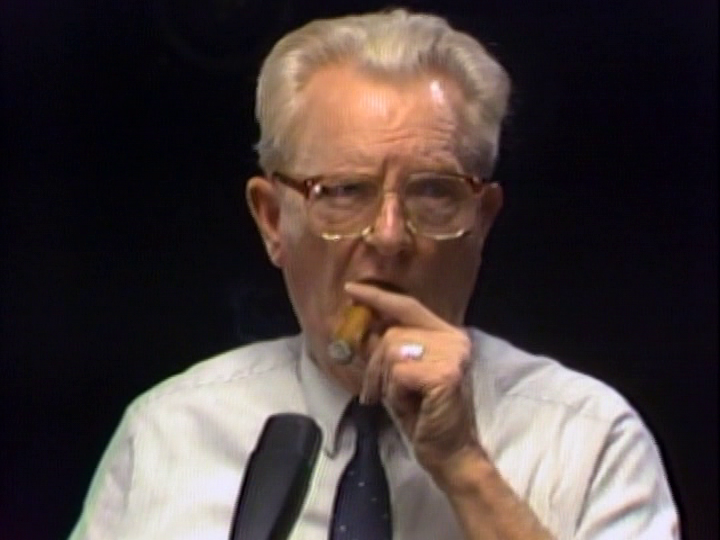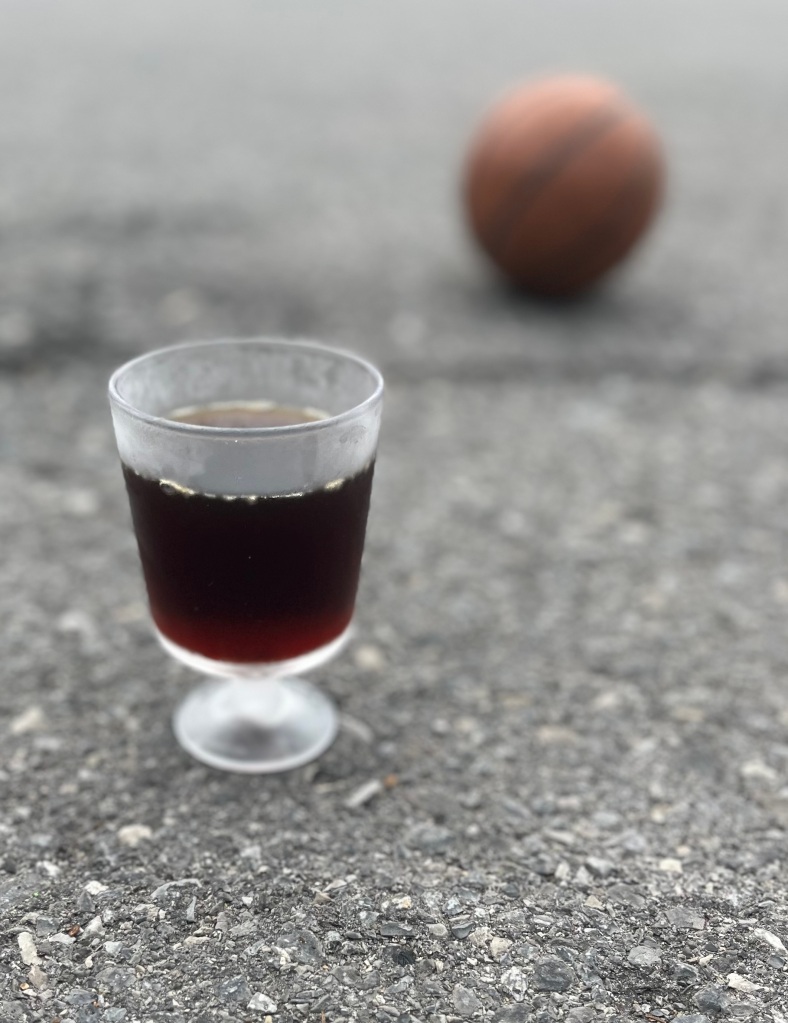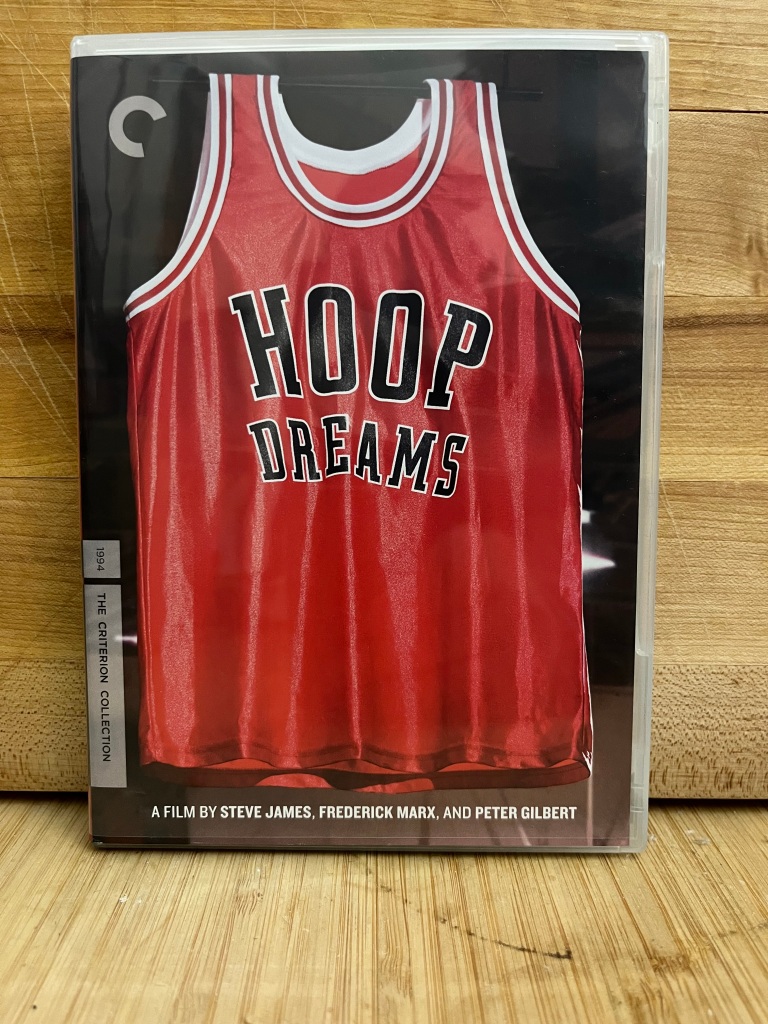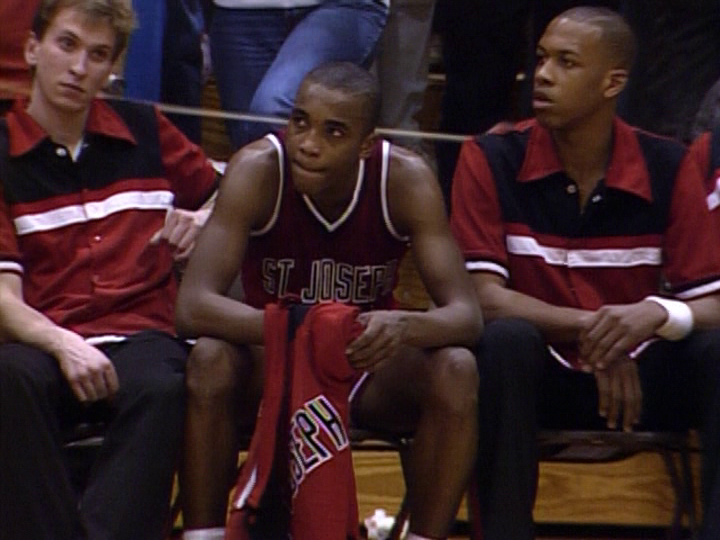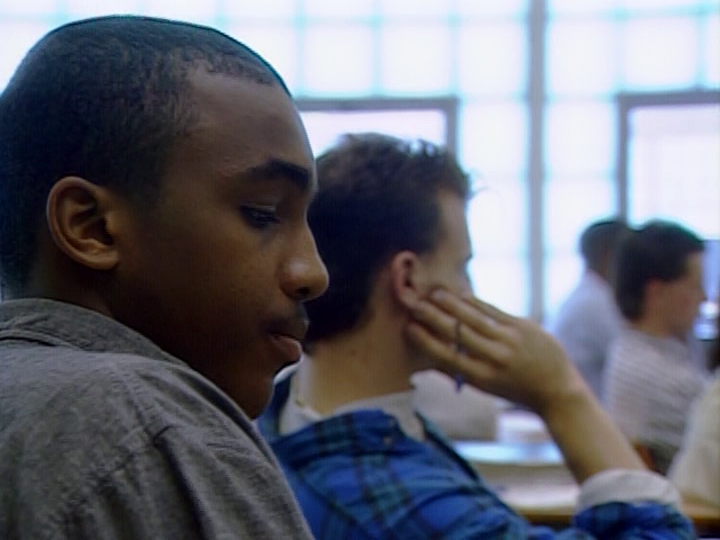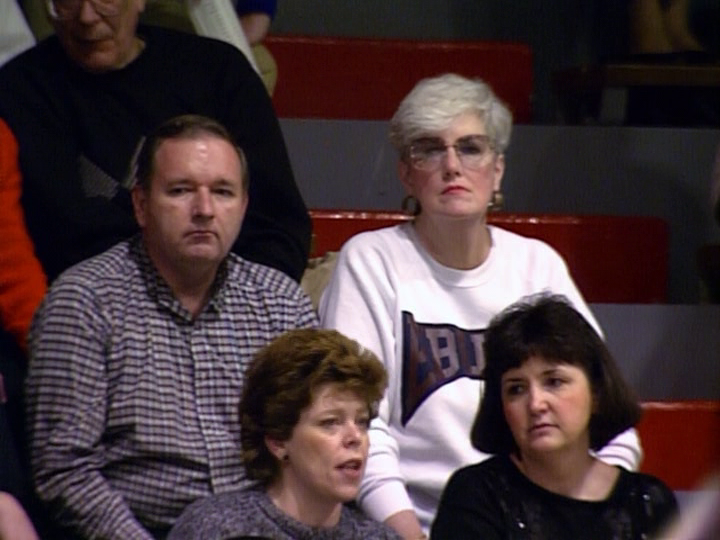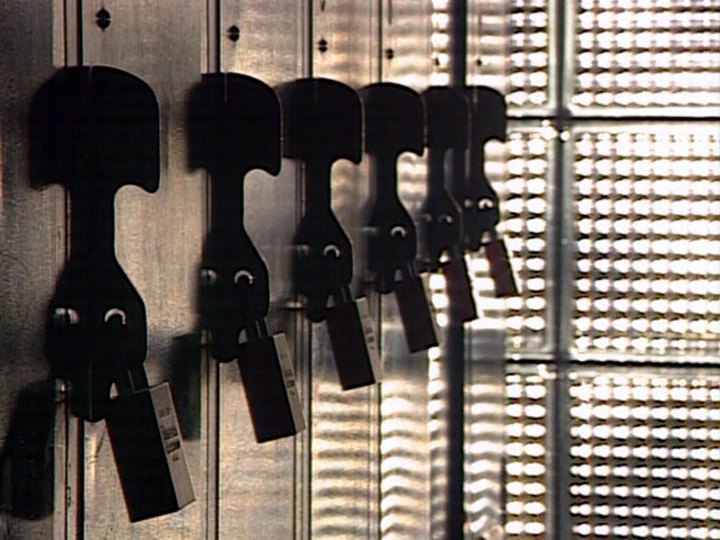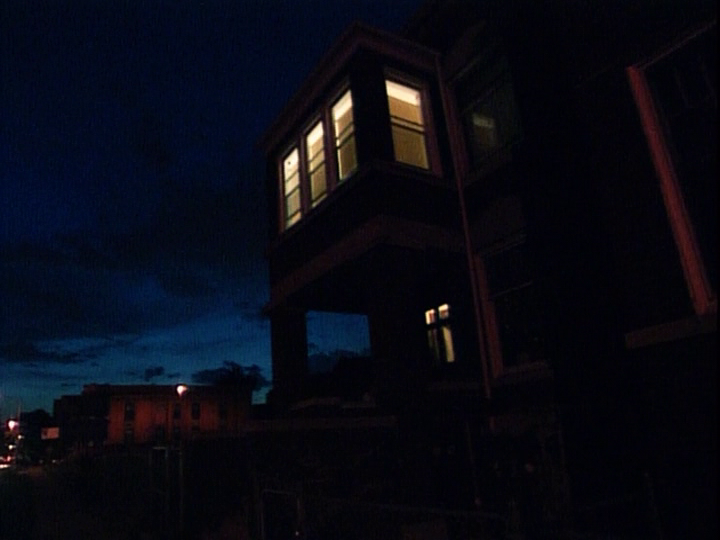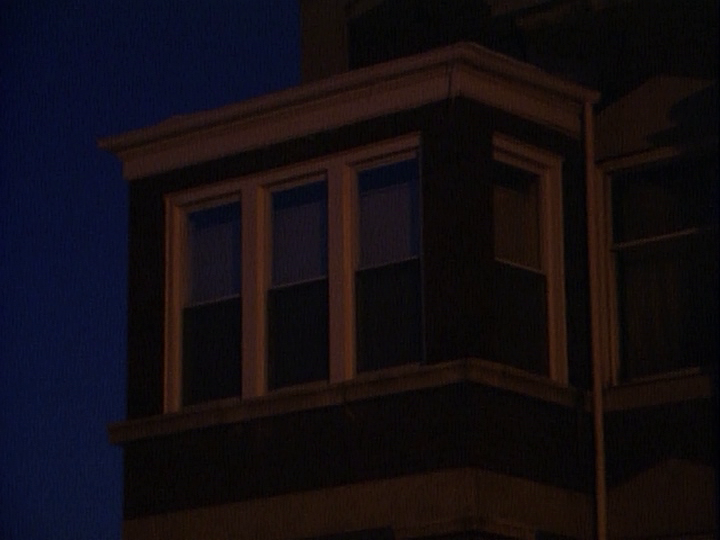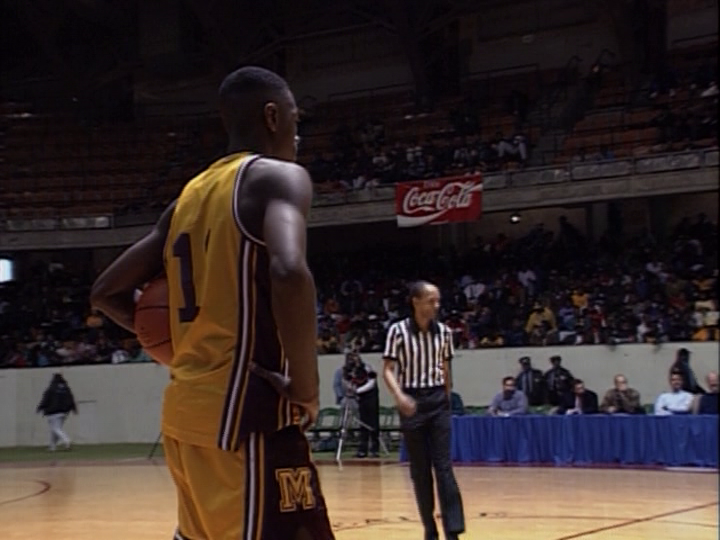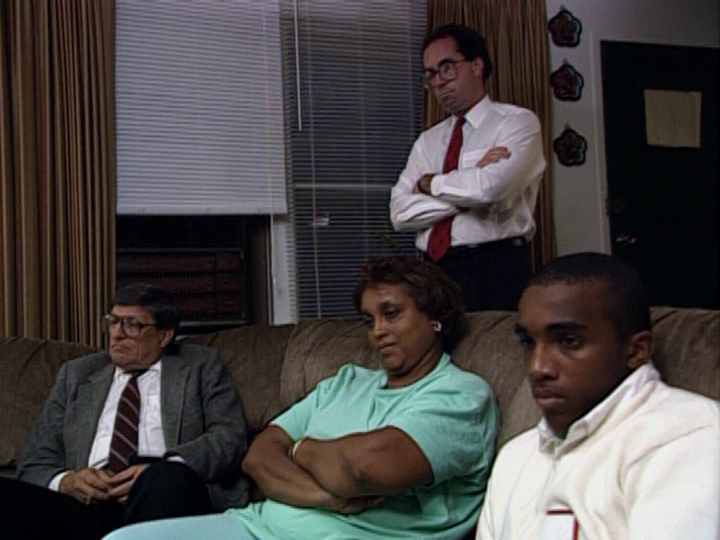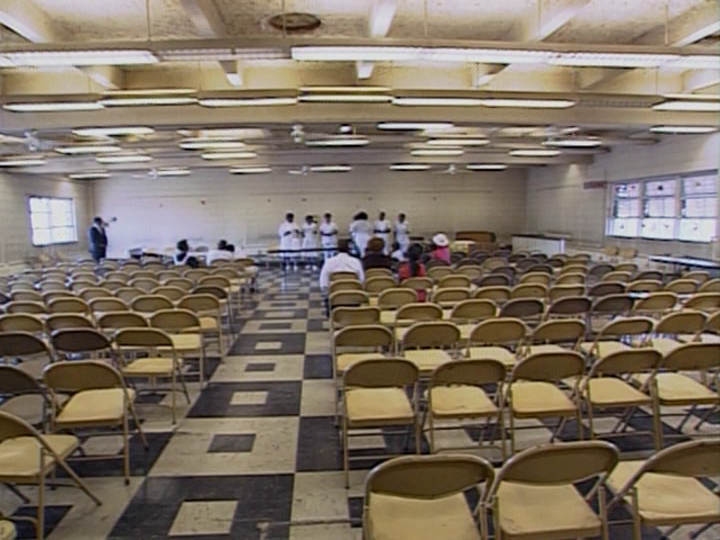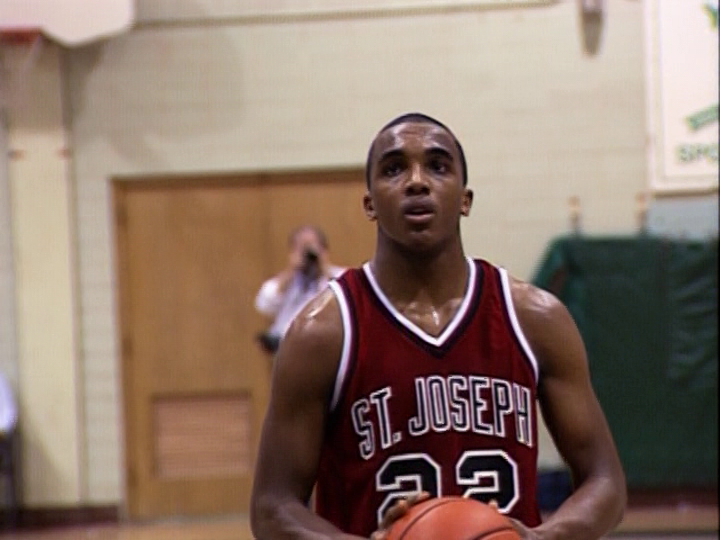My loving wife is a proud graduate of Duke University, so the Tobacco Road recipe by Joe Bolam of Char Steak and Lounge in nearby Rochester, New York in the booklet which came with my new bottle of Fee Brothers Turkish Tobacco Bitters immediately caught my eye. When it turned out to taste like something these guys would love:
I knew I had my drink and a movie pairing for March! They are all panelists on the television program The Sports Writers on TV, and the person they are talking about is William Gates, who along with Arthur Agee is one of the two main subjects of the documentary Hoop Dreams. The sport they both play is basketball, which our household becomes fairly obsessed with each year at this time as the Atlantic Coast Conference (I’m a Pitt grad) regular season wraps up and we head into the postseason. Here’s how to make this month’s cocktail:
1 1/2 ozs. Basil Hayden Red Wine Cask Finish
1/2 oz. Cherry Heering
1/2 oz. Averna
1/2 oz. Carpano Antica
2 dashes Fee Brothers Black Walnut Bitters
2 dashes Fee Brothers Turkish Tobacco Bitters
Stir all of the ingredients with ice and strain into a chilled glass.
The Tobacco Road is a rich drink thanks to the Carpano Antica and Heering, so we left it ungarnished, but as a Black Manhattan variation, a Maraschino cherry would not be out of place. It has a lot of fruit on the nose, chocolate and coffee on the sip, and an almost sherry-like finish which suggests that it would go great with a cigar like the one Bill Gleason is smoking above in the image on the right.
On to Hoop Dreams! Here’s a picture of my Criterion Collection DVD release:
It can also be streamed on a wide range of platforms, including both The Criterion Channel and Max with a subscription, and some people may have access to it via Kanopy through a license paid for by their local academic or public library as well.
Hoop Dreams is a longitudinal documentary which follows Agee and Gates over a five-year period which begins with them being discovered on the streetball courts of inner city Chicago and recruited by St. Joseph, an elite prep school in the suburbs, and ends shortly after the conclusion of their respective high school basketball careers. At the start of the film, Gates is ascendant: the excerpts from The Sports Writers on TV that I began this post with are from the “Freshman Year” section of Hoop Dreams and in them Bill Gleason compares him to Hall of Fame point guard Isiah Thomas. Agee, on the other hand, is kicked out of St. Joseph his sophomore year after his family falls behind on their tuition payments. Gates suffers two major knee injuries during his junior year, though, and is therefore never able to lead St. Joseph to the promised land of the Illinois state championship tournament while Agee blossoms as an upperclassman and leads Marshall Metro High School on a Cinderella run to the semi-finals of the same event. The movie concludes with end titles indicating that both players are now seniors in college playing for Marquette and Arkansas State respectively, but noting that Gates has grown disillusioned with basketball.
Agee and Gates represent the millions of youth athletes in the United States fighting for a shot to become one of the roughly 500 professionals who appear in an NBA game each season. Competition is part of the film’s DNA, so it’s understandable that for many critics it’s of paramount importance to determine who its “winner” is. To bell hooks, writing in Sight & Sound in 1995, “the triumphant individual in the film is (the young) Arthur Agee, who remains obsessed with the game” while Gates “is portrayed as a victim” despite the fact that (or because) he “learns to critique the ethic of competition that he has been socialised to accept passively within white-supremacist, capitalist patriarchy.” Kimberly Chabot Davis argues against this interpretation in a South Atlantic Review article called “White Filmmakers and Minority Subjects: Cinema Vérité and the Politics of Irony in Hoop Dreams and Paris Is Burning“:
Hooks sees William Gates as the loser of the film because he eventually decides to reject the basketball dream, and she is upset that “his longing to be a good parent, to not be obsessed with basketball, is not represented [by the filmmakers] as a positive shift in his thinking,” whereas Arthur Agee, who never questions the dream, is represented as ‘the triumphant individual.’ In direct opposition to hooks’s reading, I came out of the film thinking that the filmmakers indirectly criticize Arthur Agee’s blind pursuit of the NBA dream and attempt to portray William Gates as the real winner because he learns that education and family responsibility are “truer” measures of success.
Comments made by filmmakers Steve James, Frederick Marx, and Peter Gilbert in the short documentary Life After Hoop Dreams included on the Criterion Collection DVD as an extra suggest that the latter may track more closely to their actual feelings, but the genius of the film is that it supports both readings. As John Edgar Wiseman notes in his essay “Serious Game,” its final cut “seems not based on assumptions the filmmakers formed before they encountered the actual lives of their subjects but a story that evolved naturally as footage accumulated.” While Hoop Dreams doesn’t insist on a moral, it definitely does have a point of view. Take, for instance, the transition between its first two sections. “Freshman Year” ends after St. Joseph’s varsity team is eliminated from the playoffs with voiceover narration by James that says, “despite the loss, William’s gutty performance bodes well for next year.”
“Sophomore Year” then begins with him in class:
James notes that he and Agee are both on partial scholarships which aren’t big enough to cover a recent tuition increase. Cut to Patricia Wier, President of Encyclopedia Britannica explaining how in response to a solicitation by St. Joseph she and her husband decided to sponsor a student, who turned out to be Gates. There’s a shot of Wier and husband in the stands watching a game:
Followed by one of them introducing Gates to their friends:
James’s narration explains that “with continuing support from Patricia Wier, William is assured that his entire education at St. Joe’s will be free.” This is immediately succeeded by a series of interviews with Agee, his mother, and St. Joseph basketball coach Gene Pingatore describing the chain of events that led to Agee being dismissed from the school. “I thought Pingatore and them would help me out, but. . . . ” Agee says, shaking his head:
Pingatore, Agee, and Agee’s mother then all speak in turn: Pingatore defends the school’s decision on the grounds that St. Joseph is dependent on tuition dollars to function, Agee speculates that Pingatore was concerned about his height, and Agee’s mother states that she never would have enrolled her son at St. Joseph in the first place if she had known he might experience the anguish of being forced to change schools in the middle of the year. The scene ends with a four-shot montage sequence: it begins with empty desks and a row of padlocks:
Followed by a statue of Saint Joseph himself:
And then a shot of a sort of shrine to Isiah Thomas, who attended St. Joseph, in the school’s lobby which is shown multiple times throughout the movie:
Whatever the filmmakers think of Agee’s and Gate’s choices and values, they clearly don’t believe that St. Joseph has treated the two boys equally and have a theory why not. Another thing I like about Hoop Dreams is the way it utilizes repetition effectively. Robert Greene discusses one great example in his essay “The Real Thing.” A one-on-one game between Agee and his father which takes place at the beginning of the film:
Is echoed by second near the end which, because of everything that has happened in between, “has the cadence and expressive power of an epic showdown.”
Another is the way the filmmakers leverage a recurring establishing shot of the Agee’s apartment at night with its lights on to efficiently communicate that their power has been turned off:
Speaking of efficient, James’s narration does a marvelous job of concisely telling the story of important basketball games, such as this one in which Agee and his teammates force a taller but slower opponent out of its comfort zone by holding the ball late into the shot clock:
And I love the way the film lets us into spaces we may never otherwise get to see such as a D1 recruiting visit:
And a nurse’s assistant graduation:
I was surprised to find that what I appreciated most after recently spending time with Criterion Collection edition of this film, though, were the commentary tracks. The one featuring Agee and Gates comes closer to being “essential” than any other I’ve ever listened to: anyone willing to spend nearly three hours of your life watching Hoop Dreams absolutely will want to hear what its subjects have to say! The commentary track with James, Marx, and Gilbert is full of insights as well and the two sometimes work in tandem to show parts of the movie in a new light. To go back to St. Joseph’s treatment of Agee, both groups believe that school didn’t just treat him unfairly, but in fact acted contrary to its own best interests. The former players observe that it was a bad basketball decision:
ARTHUR: But they was just, like, “I guess we got room for one guy. And this one guy is gonna take us down state, like, we’re gonna put everything in him. We don’t need another guy that HE needs.” And they didn’t know that William needed me to take that pressure off of him.
WILLIAM: I mean, if there was somebody that understood me at St. Joe’s, it was Arthur. Because at that particular point I really felt like the only person who could have understood me out there was him. And I felt like not only did I lose a best friend at the time, I felt like a part of me was gone.
While the filmmakers express bewilderment that St. Joseph could be so un-PR-conscious to kick Arthur out of school knowing that he was the subject of a movie. At other times, illumination comes from the distance between the commenters’ different experiences of the same event such as when James and company lament not being told earlier that Gates had a daughter with his girlfriend, while he says this can’t possibly be true because the St. Joseph school newspaper ran a story about it. They also both note that Pingatore changed after the film but have different explanations for why: Agee and Gates think it’s because he learned from watching himself on screen and began yelling less and giving his players more freedom, whereas the filmmakers ascribe his more relaxed demeanor to finally winning a state championship in 1999, not anything to do with Hoop Dreams.
Mostly, though, it’s amazing to just listen to Agee and Gates relive pivotal moments in their lives like the two free throws that Gates misses at the end of his junior year which lead directly to a St. Joseph loss in the playoffs.
He explains that he heard his cartilage tear earlier and therefore didn’t want the ball at the end of the game. As Gates watches himself go to the line, he observes that he shot 100% from the line in the games leading up to this one and that “all of these games are high-pressure games. None of them are more high-pressure than the others.” To him, the reason he missed those two shots was simple: he couldn’t bend his knees and never should have let himself be inserted back into the game. “People think I’m disappointed because I missed the free throws,” had adds. “No, I’m disappointed because I wasn’t honest with myself or my teammates. I let my team down that year.”
If you do watch the film, both commentary tracks, and Life After Hoop Dreams, you will have spent more than 12 hours with Agee and Gates by the time you finish. The cumulative effect is that of revisiting your own sports memories, the way we Horbals like to break out our video recording of my little brother’s 4×800 relay team winning a Pennsylvania state track title in 2005. And that, I think, is the real achievement of the Criterion Collection’s presentation of Hoop Dreams: it makes these two young men and everyone in their lives seem like family.
Cheers!
All original photographs in this post are by Marion Penning, aka my loving wife. Links to all of the entries in this series can be found here.

